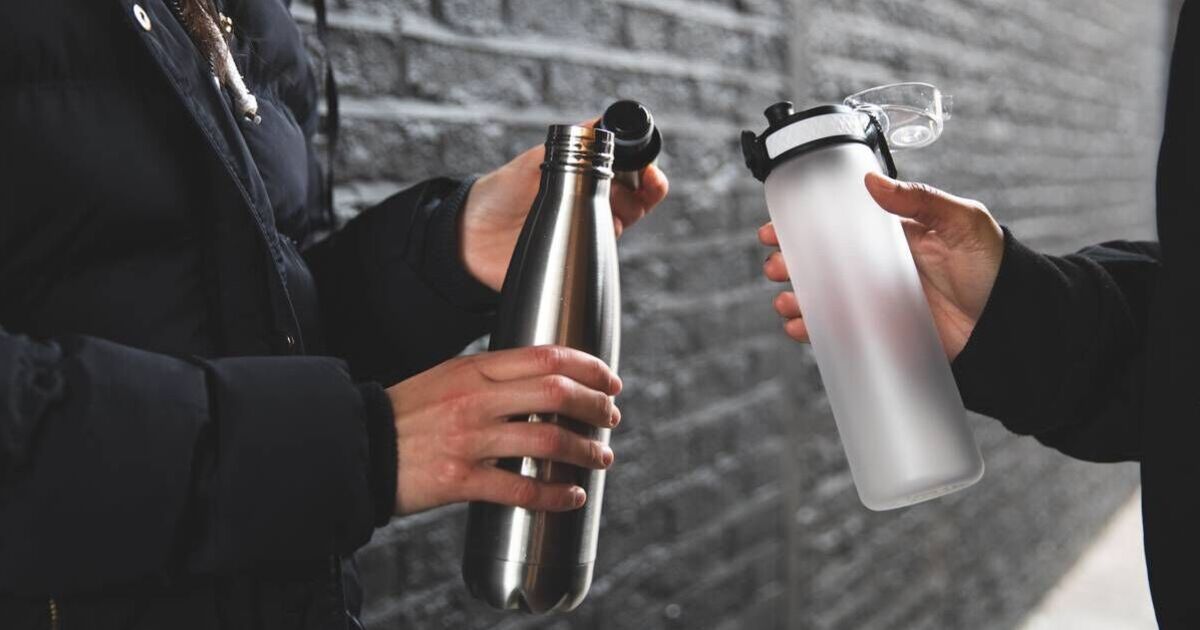It’s critical to do our bit for the planet, whether that be ditching plastic straws, conserving energy or carrying reusable water bottles.
But even with good intentions, caution is paramount.
A stark reminder of this came when American Kae Smith found her commendable efforts backfiring due to poor maintenance of her eco-friendly bottle.
She shared a shocking revelation on TikTok since deleted after continuous bouts of illness leading to bronchitis.
Upon disassembling her drinkware, she uncovered a mould-ridden silicone mouthpiece.
Her misadventure was picked up by Metro, highlighting a stark health warning to regularly and properly clean those virtuous vessels to prevent ‘mould poisoning’.
Mould, which produces potentially harmful allergens, irritants and toxins, can provoke allergic reactions if inhaled or touched, warns the NHS.
Symptoms include sneezing, runny nose, red eyes and skin rash, reports Gloucestershire Live.
Smith had been using an Owala water bottle, speaking to DailyMail.com, whose spokesperson stated: “One of the standout features of Owala bottles and tumblers is that they are designed to be easy to clean. The spout gasket, straw, and other parts are easily removable for thorough cleaning.”
But how does the risk materialise? HomeCleanse offers insight; water bottles create prime conditions for mould growth, with each variety spreading through airborne microscopic spores journeying on the winda concern one shouldn’t brush off.
To bring these spores to life, the environment must be within a temperature range of 4-32C, with a supply of food, oxygen, and moisture.
Given these conditions for 24-48 hours, a spore can develop into a colony.
Each time your mouth comes into contact with the bottle, skin cells and food particles can become trapped, providing the mould spores with a source of nutrition.
As the mould begins to grow, it releases spores and potentially toxins, contaminating all the water inside the bottle with mouldy particles.
One Green Bottle offered some advice on maintaining the cleanliness of reusable bottles.
Consider investing in a stainless steel bottle
One Green Bottle suggested: “Of course we’re going to suggest this, but for good reason. Stainless steel is the enemy of black mould. Non-porous, there are no tiny cracks or scratches for bacteria to hide in, it can withstand regular washing without rusting or leaching chemicals, plus it is resistant to stains (duh) and odours.”
Allow your bottle to dry completely after washing
“This will prevent the damp conditions needed for mould to grow in,” One Green Bottle added.
Store your bottle in a cool location
“Mould is more likely to grow in warm conditions so now the weather is getting warmer, don’t leave it in a sunny window or hot car (unless it’s completely dry),” One Green Bottle said.
If you’re still concerned about mould in your water bottle, Greens Steel shared some daily tips to ensure cleanliness.
To eliminate the mould smell from your water bottle, you can:
- Wash your water bottle daily
- Wash in the dishwasher if possible for a more comprehensive clean
- If that’s not available hand wash daily and then soak once a week
- You should try to use a bottle brush to scrub the hard to reach areas
- Take extra care to clean around the mouthpiece where you come into contact with the bottle
Owala was approached for comment.







